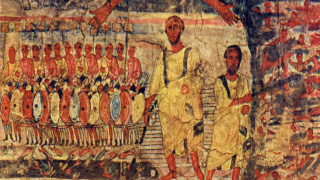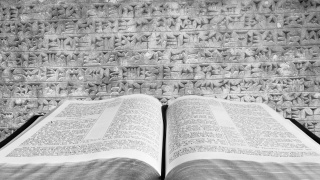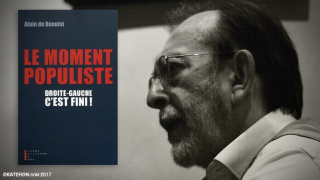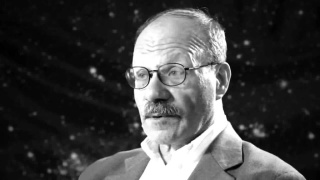The Linguistic Structure of Monotheism in Ancient Religions: The Agglutinative Origin Hypothesis and the Emergence of Polytheism in Inflectional Languages
The linguistic structures underlying polytheism in agglutinative languages—such as Japanese, Korean, Turkish, and Mongolic—rely not on variability of language units but on their concatenation. As a result, semantic units are extended not through vertical stratification but through horizontal linkage, enabling a stable expression system that naturally accommodates the co-presence of multiple deities without internal contradiction.
In this framework, divine hierarchies, attributes, and manifestations are not rigidly separated; rather, they are connected laterally, thereby generating a religious order with spatial expansion. This system inherently presupposes the coexistence of gods as an expressive norm. In contrast, the expression of polytheism in inflectional languages—exemplified by Greek, Roman, and Germanic mythologies—is structured around morphological changes in words. Shifts in tense, mood, aspect, agency, and honorific register are directly linked to meaning, and these inflectional transformations produce fragmentation, multiplication, and stratification of the divine.
Here, the very potentiality of verbal transformation becomes a marker of the sacred. “Speaking” itself is theatricalized, becoming an act of donning the masks of gods. When monotheistic terms such as Deus in Latin or Theos in Greek are introduced into agglutinative-language cultures, their intrinsic morphological structures are nullified. In their place, the agglutinative system opens a polytheistic translation space, wherein, for instance, the Japanese word kami is never received as “a singular God” but rather reconstructed as “a transcendent being immanent within all things that exist.” This is because agglutinative languages are grounded not in morphological variation but in connective expression—“A and also B”—whereby the “oneness of God” is refracted horizontally into “multiple divine aspects.”
Accordingly, contrary to conventional understanding, polytheism did not arise from translating monotheism into agglutinative languages. Rather, it is more realistic to assume that the agglutinative worldview originally contained the generative principle of a singular absolute entity. It was during the translation into inflectional languages that this principle underwent fragmentation and transformation through morphological shifts, resulting in linguistic polytheization.
This semantic inversion reveals that while agglutinative structures inherently maintained a centripetal unity, their transposition into inflectional grammar systems led to the diversification of divine representations through suffixal mutations and internal word shifts. This transformation was not conceptual but arose through a recombination of linguistic expression. The prevailing view—that monotheism, born in inflectional-language contexts, was pluralized when transferred into agglutinative systems—rests on a Eurocentric linguistic ideology. In fact, the reverse hypothesis, wherein monotheistic structures originate in agglutinative cultures and are fragmented through inflection, holds theoretical superiority.
Such a reversal has wide-ranging implications for our understanding of religious nomenclature, theological translation, and the genesis of moral frameworks. The shift in divine names, for example, is less the product of ideological evolution than of morphological action within inflectional systems. Religious doctrines were not pluralized by translation per se, but rather, the inflectional language mechanisms themselves replicated divine character types. Moreover, ethical paradigms based on monotheism were already latent in agglutinative spheres but lost their structural coherence when subjected to the unstable variability of inflectional languages.
Thus, agglutinative religions originally operated with a centripetal principle of expression. The shift to inflectional forms generated polytheistic representations not via conceptual mutation, but through the relocation and reconstruction of their linguistic frameworks.
Judaism stands out as a singular example of a monotheistic tradition that successfully restructured the Sumerian-derived agglutinative model within the grammatical confines of an inflectional language—without collapse. This is not merely a matter of doctrinal transcription but a distinctive reordering of expressive structures.
In Sumerian religion, grammatical relations—particularly between subject and predicate—are articulated not by morphological inflection but through particles and word order. This structure distributes the name and function of the deity within the sentence, which from an external perspective appears polytheistic. However, at its core, it preserves a constant grammatical axis that centralizes divinity. This technique divides the monotheistic principle into discrete grammatical expressions, while remaining under the control of a unified syntax.
In contrast, the absolutization of the “Name” (Shem) in Judaism, along with the inviolability of the YHWH tetragrammaton, serves to establish God as the constant grammatical subject. Since Hebrew, as an inflectional language, absorbs the subject into its verbal morphology, it allows for an internalized and stabilized centrality of God—distinct from the externalized subject of agglutinative grammar, but functionally equivalent in maintaining divine centrality.
Hence, Judaism—while having adopted an inflectional linguistic system—preserved the Sumerian “God-as-subject” model, organizing all linguistic activity around the Divine Name. In this sense, it stands as the only fully realized example among inflectional-language religions of preserving theological unity at the level of grammatical structure. In contrast, the fragmented divine attributes in Greco-Roman mythology, the administrative and ethical separations of their pantheons, and the subsequent decay of conceptual coherence must be understood as secondary effects of linguistic transformation. The achievement of Judaism is not merely the consolidation of God under a single name but the total reconfiguration of linguistic architecture around that Name.
Therefore, Judaism succeeded in transplanting a Sumerian-style “agglutinative monotheism” into an inflectional grammar without internal contradiction—a feat unmatched by other inflectional-language faiths, which largely failed to retain ethical coherence under morphological pluralization.
Furthermore, polytheistic traditions in inflectional-language India—characterized by verb-driven and case-based grammatical systems—did not propagate as fully conceptual systems but as morphological chains of divine representation. These expressions, when transmitted westward, helped lay the groundwork for the mythologies of Greece and the Germanic world. Deities of Vedic India, such as Indra, Agni, and Varuna, were re-encoded through inflectional suffixes and personified as Zeus, Hephaestus, Thor, and Wotan, reorganized into genealogical pantheons.
This linguistic export was not a conceptual shift, but rather a recombination of expressive forms. While agglutinative languages fragmented monotheism when expressing it in inflectional terms, the reverse process—inflectional languages dispersing divine character through persistent morphological mutation—represents what might be termed the “First Wave of Indic Religion.” This involved the horizontal chaining of symbolic functions such as thunder, fire, death, and knowledge across different ethnocultural contexts.
In this way, Western religious structures are not built upon universal ideas but upon the formal strength of expression systems. Religion, therefore, is not a translatable set of ideas but an expressive system wherein semantic relationships and positional configurations are reorganizable.
When differing divine forms emerge in agglutinative worldviews, they must not be treated as conceptual deviations, but as natural differentiations rooted in fundamentally distinct linguistic dimensions.












